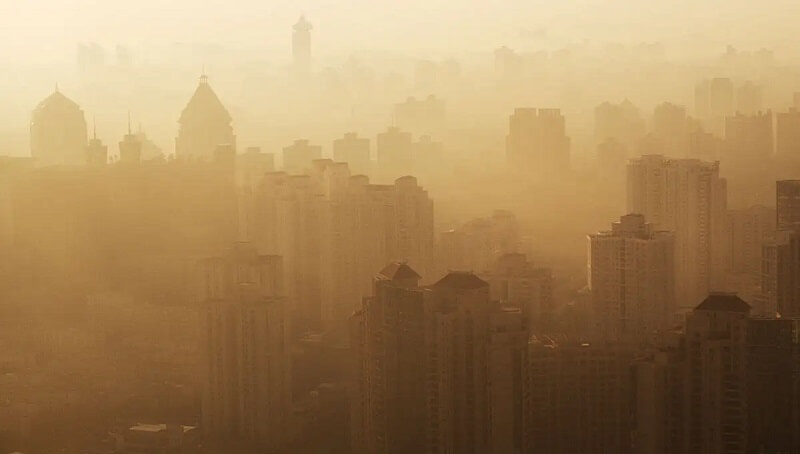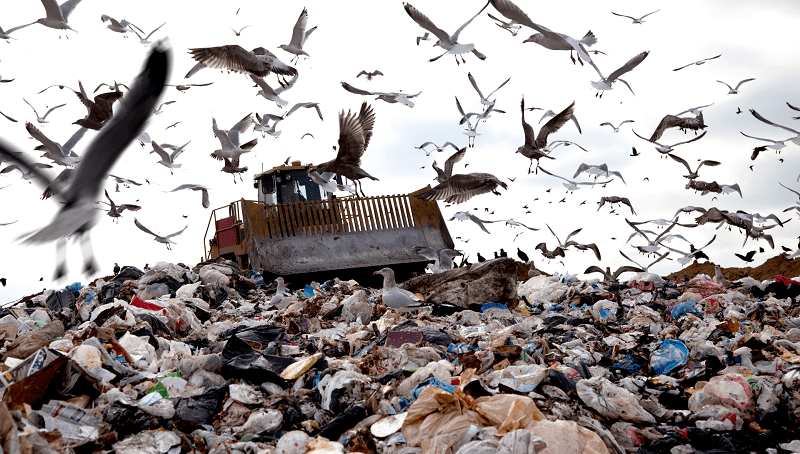We notice more and more often the use of the term pollution in different contexts, and we read more and more often in the media about the various types of pollution and the effects that this phenomenon has on the environment as well as on our health. But, do we really know what catastrophic effects does air pollution have and what preventive measures can we take to limit it?
Air pollution is one of the forms of pollution with major, disastrous effects on the environment. From a technical point of view, any physical, biological, or chemical change in the atmosphere may be called air pollution and occurs when any harmful gas, dust, or smoke enters the atmosphere and affects plants, animals, and human beings.
Thus, air pollution involves the pollution of the atmosphere and so any gas or substance entering the atmosphere can create undesirable imbalances in the medium or long term. Therefore, the thickening of the ozone layer in the atmosphere (which protects us from the negative effects of ultraviolet radiation) caused by air pollution is a major threat to the existence of ecosystems on the planet and represents the ultimate challenge that humanity must overcome despite political differences on the international stage.
Air pollution is a major cause of illness and premature death and represents the greatest risk to environmental health in Europe. Heart disease and stroke are the most common causes of premature death attributed to air pollution, followed by lung disease and lung cancer.
From the smog noticed in the cities to the polluted air inside the house (from cooking, electric heating, lighting), air pollution represents a major threat to health and the climate. Combined, air pollution in the open air, and indoor air pollution kill about 7 million people worldwide every year. Data from the World Health Organization show that 9 out of 10 people breathe air containing high levels of pollutants.
More than 80% of people living in urban areas where air pollution is monitored are exposed to pollution levels exceeding the OMS’s indicative limits, which are set per type of pollutant.
What exactly does air pollution mean?
Air pollution is a mixture of natural and artificial substances from the air we breathe. It is usually separated into two categories: Air pollution and indoor air pollution.
Air pollution involves exposure to outside polluting agents, outside the built environment:
- Fine particles produced by burning fossil fuels – PM2.5 and PM10 (e.g., coal and oil used in energy production)
- Harmful gases (sulfur dioxide, nitrogen oxides, carbon monoxide, chemical vapors, etc.)
- Ground-level ozone (a reactive form of oxygen and a primary component of urban smog)
- Cigarette smoke
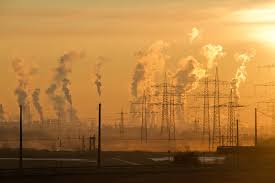 Indoor air pollution involves exposure to particles, carbon oxides, and other pollutants carried by indoor air or dust:
Indoor air pollution involves exposure to particles, carbon oxides, and other pollutants carried by indoor air or dust:
- Gases (carbon monoxide, radon, etc.)
- Household products and chemicals
- Construction materials (asbestos, formaldehyde, lead, etc.)
- Indoor allergen agents (mites, fungi, insect remnants, cockroach, etc.)
- Cigarette smoke
- Mold and pollen
- Air pollution, which in some cases penetrates the interior through open windows and doors, ventilation, etc.
Adverse health effects related to air pollution
Over the past 30 years, researchers have discovered a wide range of health adverse effects believed to be associated with exposure to air pollution. Among them are respiratory diseases (including asthma and changes in lung function), cardiovascular diseases, premature birth, and even death.
One third of all deaths caused by stroke, lung cancer, and heart disease are due to air pollution, which means a figure equivalent to the number of deaths associated with smoking and a figure much higher than the number of deaths associated with excessive salt consumption.
The health adverse effects of air pollution depend not only on exposure but also on the vulnerability of humans. The vulnerability to the impact of air pollution may increase as a result of age, pre-existing health conditions, or the particular behavior of each person. A large number of studies suggest that people with lower socioeconomic status tend to live in environments with lower air quality.
In 2013, the World Health Organization concluded that air pollution in the open air is carcinogenic to humans. The representatives of the International Agency for Research on Cancer have reached the same conclusion, and have classified air pollution in general, as well as suspended particles (PM), a separate component of air pollution mixtures – as carcinogenic.
Types of air pollutants
In order to better understand the causes of air pollution, we need to know that the pollutants entering the atmosphere can be divided into primary and secondary pollutants. Thus, primary pollutants are the direct result of an industrial process (such as sulfur dioxide emitted by factories, for example) while secondary pollutants are caused by reactions of primary pollutants.
Causes of air pollution
Among the causes of air pollution, there are a number of activities such as:
- Combustion of fossil fuels – sulfur dioxide emitted from the combustion of fossil fuels (such as coal or oil) is one of the main causes of air pollution. At the same time, the cars with internal combustion engines, the ones we use every day, are major polluting sources with harmful effects on air quality because they release tens of thousands of tons of harmful gases into the atmosphere every day.
- Agricultural activities – ammonia, for example, is a product often used in farming activities while being one of the most dangerous gases present in the atmosphere. Furthermore, the widespread use of insecticides and pesticides contributes to the pollution of the environment, including the atmosphere.
- Mining activities – Mining is a domain where large equipment is used. During the process, dust and chemicals are released into the air causing massive air pollution. This is one of the reasons why this activity is responsible for the deterioration in the health of workers and inhabitants in the proximity of mining sites.
- Domestic activities: Household cleaning products or paint products release toxic substances in the air which cause environmental pollution. Did you notice that when you paint inside, even with the windows open, the air becomes unbreathable? Although this seems like minor pollution, thousands of such “minor” air pollution instances occur every day, and we will see that all contribute to the constant and almost irreversible deterioration (in the absence of adequate measures) of the air quality we all breathe.
We all have an obligation to contribute to the protection of the environment and to ensure, for us and for the generations to come, a better air quality.
Secondary effects of air pollution
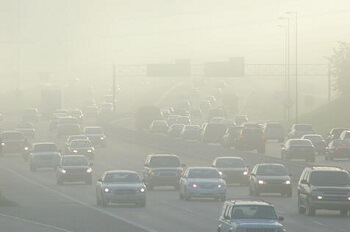 Among the effects of air pollution, the most serious are:
Among the effects of air pollution, the most serious are:
- Respiratory and cardio-respiratory problems – the effects of air pollution on our health are alarming. They cause respiratory and heart diseases, which are the most common medical conditions in these cases. Studies have shown that inhabitants of areas with large quantities of air pollutants in air composition are predisposed to conditions such as pneumonia or asthma, in addition to many other illnesses.
- Global warming – high global temperatures, rising sea levels, and melting glaciers are alarming signals that unless urgent measures are taken to stop air pollution, the environment will suffer irreversibly. Unfortunately, the world’s leaders seem to be uneasy and not to reach a consensus when it comes to limiting or preventing the irreversible from happening.
- Acid rain – gases entering the atmosphere, such as nitrogen oxides and sulfur oxides, are mixed in the atmosphere with water drops, resulting in acid rain, with harmful effects on soil and plants.
- Eutrophication of water – eutrophication occurs when a large amount of nitrogen is deposited on the surface of the sea, favoring the growth of algae that adversely affect the aquatic flora and fauna. Green algae which are present on lakes and ponds occur because of the presence of nitrogen in the air above a certain quantity.
- The effect of pollution on wild animals – like humans, animals are confronted with the devastating effects of atmospheric pollution as well. Chemicals present in the air can cause wild animal species to change their habitat, cause disease to the animals and even cause their death under certain circumstances.
- Ozone layer – ozone exists in the earth’s stratosphere and protects the planet from harmful ultraviolet (UV) rays. The presence of chlorofluorocarbons and HCFCs in the atmosphere causes an increased depletion of the ozone layer. As the ozone layer becomes thin, major imbalances emerge as a result of the penetration of a much larger quantity of UV rays into the atmosphere, with the most serious effects on human health, even in the short term.
Measures to protect and reduce the risk of exposure to air pollution
Given the technological and industrial development, it is almost impossible for a person not to be exposed to air pollution. It’s all around us. Microscopic pollutants in the air can penetrate deeply into the respiratory and circulatory systems, affecting the lungs, heart, and brain.
10 recommendations to protect ourselves from the harmful effects of pollution:
- Check the forecasts of air pollution in the area daily to know when the air is unbreathable.
- Avoid exercising in the open air when the pollution level is high.
- Limit the time the child spends playing in the open air when the air quality is unhealthy.
- Always avoid physical exercise near areas of high road traffic. Even when air quality forecasts show a level of pollution within the permitted limits, heavy traffic can increase pollution levels to one-third over a distance of almost 2 km.
- Use less electricity at home. Electricity and other energy sources supply your household with air pollution. By reducing energy consumption, you can help improve air quality, reduce emissions of greenhouse gases, encourage energy independence and save money!
- Clean the air in the house. Portable or fixed air cleaning systems can reduce the concentrations of pollutants in the indoor air, whether from air pollution or domestic air pollution.
- Use protective masks, which filter the breathing air, when there is a high level of pollution in the area. There are several types of masks, and the ability of each to remove contaminants from the inhaled air depends on the pollutant, the type of filter or adsorbent material, the type of mask, and the conditions of use.
- Use your car as little as possible. Instead, you should walk or ride a bike. Talk to one or more colleagues to go to the office together. Use public transport like buses, underground, etc.
- Don’t burn wood or garbage. The burning of firewood and garbage is among the main sources of particulate pollution (soot) in many areas.
- Do not allow anyone to smoke in the house and support the measures taken by the authorities to eliminate smoking from all public places.
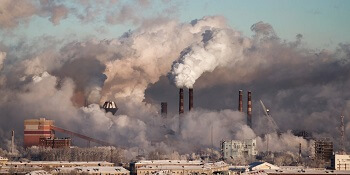 We all have an obligation to contribute to the protection of the environment and to ensure, for us and for generations to come, a better air quality.
We all have an obligation to contribute to the protection of the environment and to ensure, for us and for generations to come, a better air quality.
Here are some of the measures to prevent air pollution:
- Use of public transport – using public transport means considerably reducing air pollution and at the same time reducing traffic congestion. Perform an imagination exercise – move the 60 occupants of a trolley bus or bus in 60 cars. You will already have a full road over a length of at least 200 meters (compared to the maximum 7 meters of a trolley bus), busy traffic, and irrespirable air in close proximity to the “motorized alleyway”. So, try, from time to time, to use the trolley or subway too – you will know that you did a little more that day to protect the environment!
- Energy saving – turn off lights and any appliances that consume energy when you leave home or when you stop using them. Electricity seems a “green” or non-polluting source when compared with petrol, for example, if we are talking about fuels for cars, but we forget that it is also produced as a result of processes that generate pollution, as during the hydrocarbon burning process to obtain electricity.
- Reuse and recycling of materials – re-using objects or recycling, saving indirectly the resources needed to produce them, but at the same time contributing to better air quality by eliminating all harmful gases that would have occurred as a result of technological manufacturing processes.
- The use of green energy – solar, wind, and geothermal energy contributes to reducing air pollution. Eliminating as much as possible the combustion of fossil fuels for the production of thermal or electric energy indirectly reduces the gases resulting from combustion, thus contributing to the preservation of less polluted air.
- Modernization of installations or closure of non-performing ones.
- Use of best available techniques in each type of industry.
Of course, each person, at their home or at work, on the street or wherever they are, can contribute a little to increase the air quality we all breathe. Gathered, all these small efforts can bring about major changes in the prevention of air pollution.
In order to ensure the health of the body, every cell of the human body needs a fresh oxygen supply, which is extracted from the air we breathe and is sent to all tissues through the red blood cells.
Everything that prevents oxygen from having access to the lungs or releasing it to the cells has serious consequences for health.
When you breathe next time, be grateful to a tree, or another green plant. If they didn’t recycle the air, we would have no oxygen. If forests are destroyed, as in South America, where huge areas are destroyed due to acid rain—the amount of oxygen will decrease and the amount of carbon dioxide will increase making the planet retain heat.

